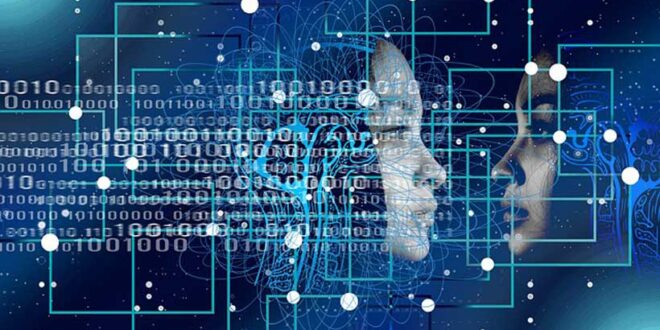Matthew Maavik
The global infoscape is currently abuzz with alarmist predictions over the dangers posed by artificial intelligence (AI). Billionaire entrepreneurs and their hirelings, who had once gushed over the emerging AI “technopia”, have suddenly turned apocalyptic. As the narrative du jour goes, a sentient AI may ultimately turn against its creators.
But are there any merits to this claim, apart from fictional cues from the Terminator franchise?
One way to answer that question would be to compare AI to an analogue that is already available and sentient, namely — the human brain. AI was designed not only to mimic the human mind but also to out-compute it in certain aspects. Apart from presenting a paradigm shift, AI’s utility is not entirely revolutionary. Rather, it is a continuation of innovations past and present — wheels, cranks, and windmills to surmount our limbic limitations; bows, arrows and missiles to counter remote threats; and the Internet to resolve space-time constraints in (global) communications.
According to a notable article in the Foglets, “it is postulated that the human brain operates at 1 exaFLOP, which is equivalent to a billion calculations per second”. Mind you, this is just a postulation — a guesstimate likely defined by computing metrics. At the time of writing, Frontier, the world’s fastest supercomputer, reportedly operates at a speed of 1.102 exaFLOP. The difference between the brain and the supercomputer, however, lies in nature and function: one thinks while the other analyses data.
We have invented supercomputers to crunch numbers, but our scientists remain baffled by the neural processing prowess of human calculators. Shakuntala Devi, who grew up in a circus environment, was one prime example. Our sophisticated machine-mediated models still cannot fully comprehend how these brains work, beyond the fact that there is an atypical increase in blood flow to particular cerebral lobes when computational tasks are performed. The rest is a plane of scattered studies, suppositions, and data that have yet to be reconciled into a comprehensible whole.
There are too many unknowns with regards to the human brain. This may be the reason why the scientific community casually divides its major functions into eight or 12primary categories. Where sentience lies within these categories remains an open question. Maybe, it is the result of cumulative interactions between all of them. Or maybe, humans have a sentient soul that makes them innovate in a way inaccessible to other species? Maybe, unlike AI devices and algorithms, the brain is software and hardware rolled into one? Too much uncertainty remains.
If neuroscience is an inchoate field riddled with myriad questions and gaps, what of its simpler subset — artificial intelligence? Can an embryonic technology invented by humans suddenly spring to life and threaten mankind? If we cannot fully understand how the human brain works or even define sentience, why are we cutting and pasting plots from sci-fi flicks onto our reality?
There is a hypothetical chance that artificial intelligence does pose a real threat within a narrow spectrum. Poor software designs, rushed developmental processes and mismatched updates to algorithms, among others, can lead to various disaster scenarios. Those involve incidents at chemical or nuclear plants, on the stock market, or with experimental self-driving vehicles. But the prospect of an ominous, sentient AI is an imaginary proposition altogether.
The current fad in AI alarmism may actually be rooted in something more venal and down-to-earth. For it may not be machines that will ultimately revolt against its masters, but rather the hundreds of millions of workers — perhaps billions — who will be displaced by AI before this decade is out. This topic deserves a dedicated commentary on its own, and the human brain provides a reality check to the supposed existential threats posed by AI.
Wonders of the human brain
The nm.org resource provides the following snippet on our thinking organ and its processing capabilities: A fragment of brain tissue the size of a grain of sand contains 100,000 neurons and 1 billion synapses. The brain can generate about 23 watts of power — enough to power a light bulb. Information travels up to an impressive 268 miles per hour, while its storage capacity is considered virtually unlimited. Research suggests the human brain consists of about 86 billion neurons. Each neuron forms connections to other neurons, which could add up to 1 quadrillion (1,000 trillion) connections.
No wonder the Psalmist exulted in the fact that he was “fearfully and wonderfully made” in “his mother’s womb”. At any one second, the brain coordinates a bewildering variety of functions within itself and the human body in order to maintain organic harmony. It also rapidly compensates any deviation from the norm within the body in the event of a disruption i.e. shifting balance to one leg after another is impaired or activating hemostasis upon bleeding. The human body is therefore the ultimate complex adaptive system (CAS).
While the body’s CAS functions are too vast and technical to be enumerated here, there are some worldly examples on how the brain contrives to protect its host. When you have a “pain in the neck” in a vexatious social setting, that is your brain sending an instruction via your body to seek the nearest exit, thereby avoiding a more serious condition. When you are suffering from snowballing intellectual torpor or depression, that may be the brain’s way of warning you to avoid fake news and the fools who peddle them.
Traffic Test: Human brain vs AI
While the brain generates 23 watts of power, the Frontier supercomputer consumes a whopping 21 megawatts (MW). One megawatt is one million watts. The energy factor alone is a reason why scientists are betting on biological computing as the next great technological frontier. Until then, we need to put up with hardware and software that still cannot match the human brain in relatively simple situations.
I often use the following traffic example to demonstrate the contrasting capabilities of the human brain and AI. Two cars are approaching a narrow choke point in opposite directions. There is heavy rain and wind outside. Car A is traveling twice as fast as Car B, but the distance to the choke point is twice as long for the former. Both drivers realize that, under normal conditions, Car B should speed up to exit the narrow strip. However, there is a large puddle of water in front of Car B, hinting at a risky pothole underneath. Both drivers instinctively realize that it is then better for Car A to exit the choke point first and thereby free up space in the adjoining lane for Car B to avoid the puddle. This is called situational awareness. The brain negotiates complexities like these without breaking the proverbial sweat — second after second!
Now, replace the drivers with autonomous driving systems and imagine the amount of energy and the scale of technological infrastructure needed to perform a similar task? The cars would need GPS navigation and weather updates, satellite and 5G connectivity, and a host of sensors. Satellite navigation may fail during a storm. So what should these ‘intelligent’ vehicles do? Stay put and halt traffic? Or seek a curb that is rapidly becoming muddy? Our human tactile senses would know when to accelerate out of a slippery situation, but self-driving cars would need a staggering array of hardware and algorithms to cope.
Now, imagine a billion cars operated by autonomous driving systems. How will the energy and computing power for this infrastructure be generated? Would a proverbial Death Star suffice, albeit for our collective benefit?
Maybe, this is the conundrum that keeps AI alarmists awake at night? The AI technopia they envisage cannot support a global population of one billion, let alone the eight billion we have at present.
In fact, according to the celebrated techno-prophet Yuval Noah Harari, the “big political and economic question of the 21st century will be what do we need humans for, or at least what do we need so many humans for”?
Now, if that does not send an existential chill down your spine, I don’t know what will
 Geostrategic Media Political Commentary, Analysis, Security, Defense
Geostrategic Media Political Commentary, Analysis, Security, Defense





